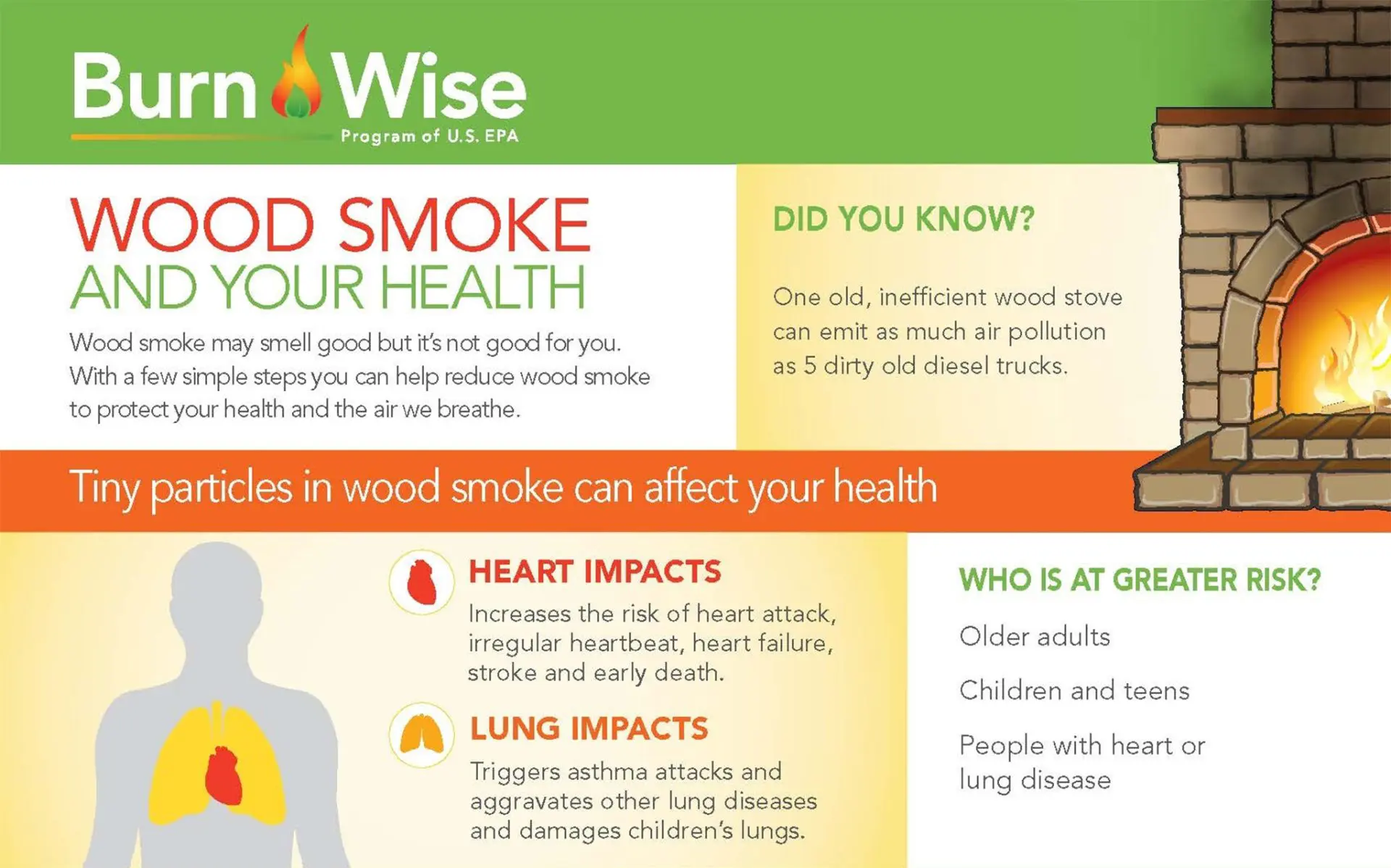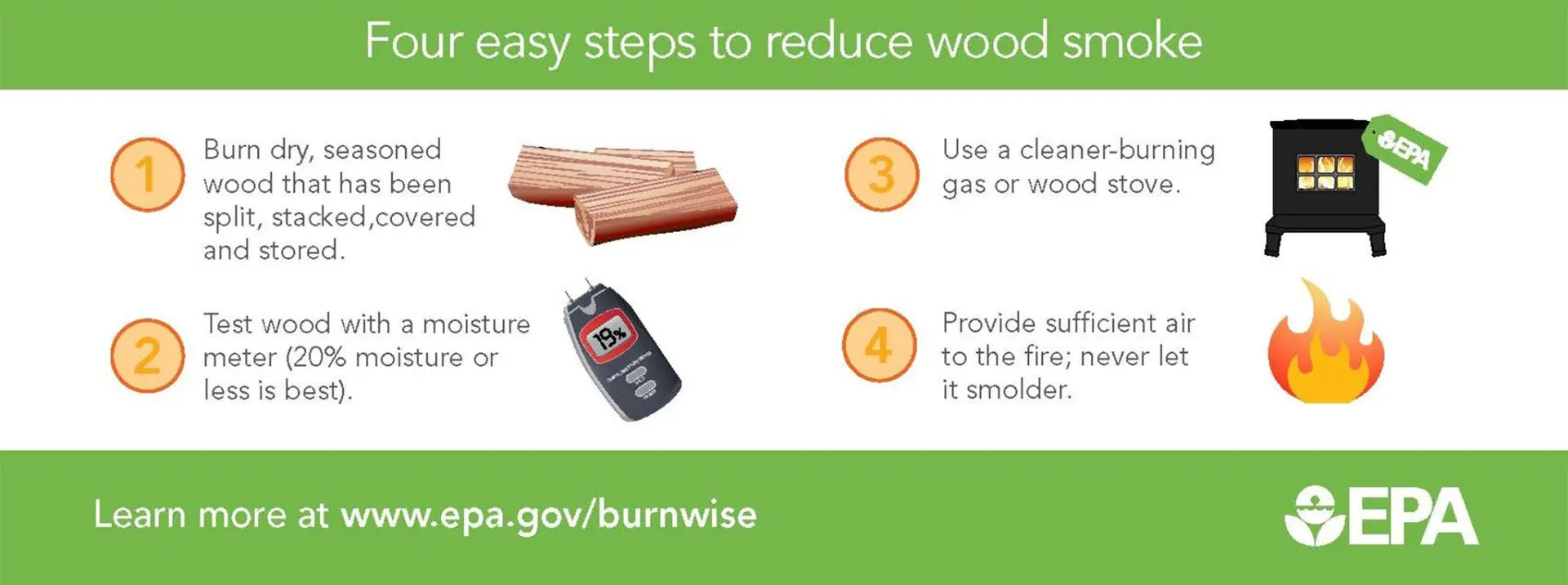Burn Wise
Learn Before You Burn

Why Should I Burn Wise?
Approximately 10 million wood stoves are currently in use in the United States, and 65 percent of them are older, inefficient, conventional stoves. Just 20 old, non-EPA certified wood stoves can emit more than 1 ton of fine particle pollution (PM2.5) into your area during the cold months of the year.Smoke from wood-burning stoves and fireplaces contain a mixture of harmful gases and small particles. Breathing these small particles can cause asthma attacks and severe bronchitis, aggravate heart and lung disease, and may increase the likelihood of respiratory illnesses.
How Do I Burn Wise?

1. Save money and time. Burn only dry, seasoned wood and maintain a hot fire.
- Season and dry wood outdoors for at least 6 months before burning it. 12 months for hardwoods like oak.
- Start fires with clean newspaper and dry kindling or consider having a professional install a natural gas or propane log lighter in your open fireplace.
- Burn hot fires.
- Don’t burn wet wood: it creates a lot of smoke and burns inefficiently.
- Never burn garbage, plastic, or pressure treated wood, which can produce harmful chemicals when burned.
- Learn more at EPA.gov about best burn practices.
2. Keep your appliance properly maintained.
- To maintain proper airflow, regularly remove ashes from your wood-burning appliance into a metal container with a cover and store outdoors.
- Have a certified technician inspect and service your appliance annually.
- Have your chimney annually cleaned by a certified chimney sweep. Nearly 7 percent of home fires are caused by creosote build up in the chimney.
- A properly installed and maintained wood-burning appliance burns more efficiently.
- If you smell smoke in your home, something is wrong. Shut down the appliance and call a certified chimney sweep to inspect the unit.
- Learn more at EPA.gov about correct installation and maintenance.
3. Keep your home healthy by upgrading to an efficient, EPA-approved wood-burning appliance.
- Today’s wood-burning appliances burn cleaner and produce less smoke inside and outside your home.
- Efficient wood-burning appliances burn less wood, saving time and money.
- Learn how to choose the best appliance for your needs at EPA.gov. See Grants & Incentives to see if there are any active grants for replacing your old wood stove.
Remember to check your local air quality forecast before you burn.


